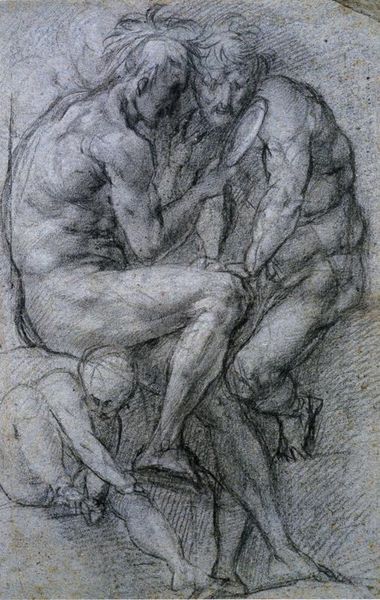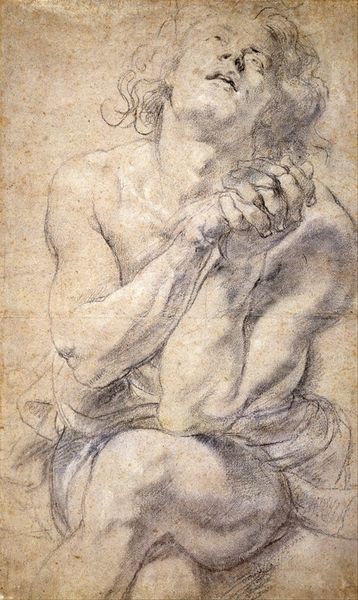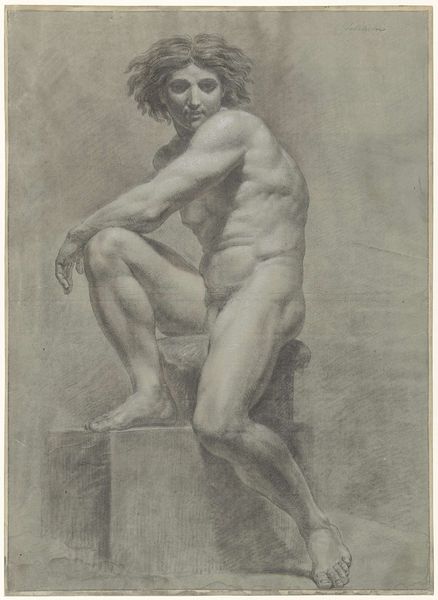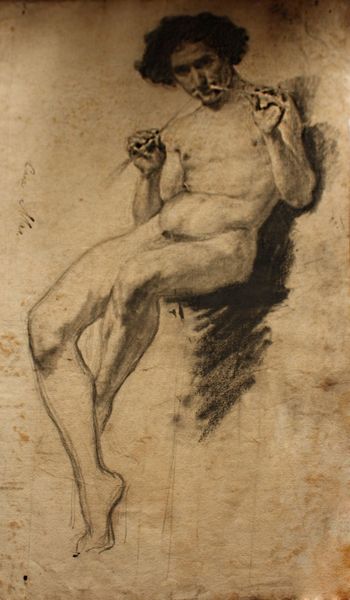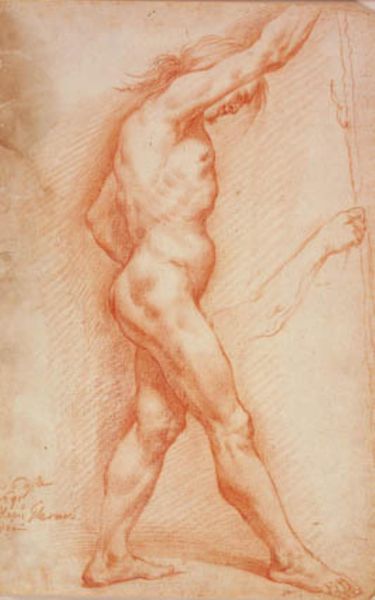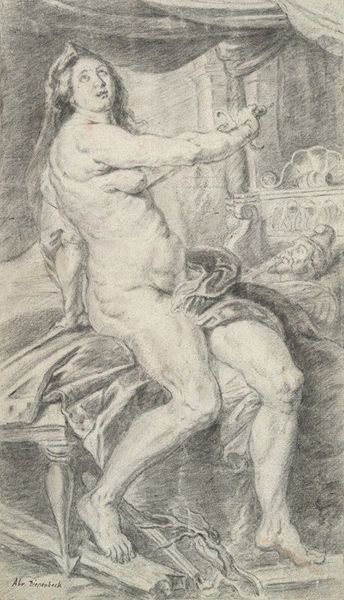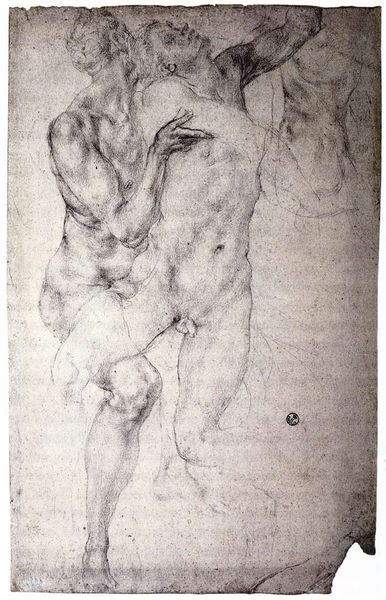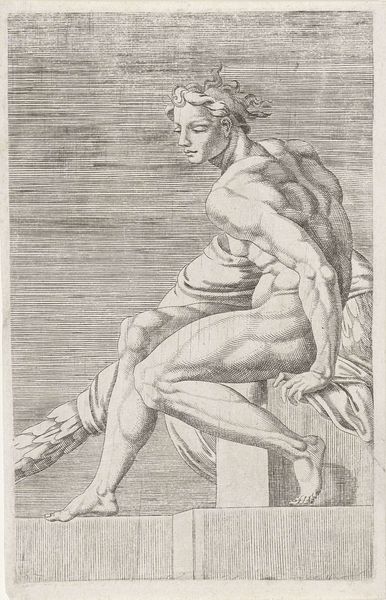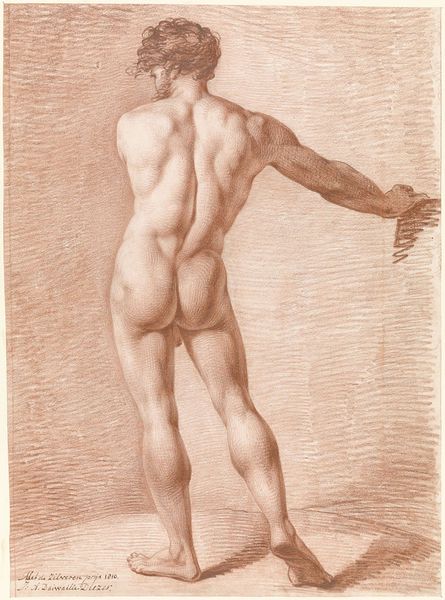
drawing, dry-media, pencil, charcoal
#
portrait
#
drawing
#
baroque
#
charcoal drawing
#
figuration
#
dry-media
#
pencil drawing
#
sketch
#
pencil
#
flemish
#
portrait drawing
#
charcoal
#
charcoal
#
nude
Copyright: Public domain
Editor: Here we have Peter Paul Rubens' "Naked Young Man," drawn in 1608 using charcoal and pencil. I'm really struck by the model's pose; it feels almost theatrical. What can you tell me about it? Curator: Ah, Rubens. A master of capturing life, wouldn't you agree? When I look at this sketch, I'm reminded that even in a preliminary work, Rubens’ genius for imbuing a figure with… vitality…shines through. The dynamic contrapposto pose…he almost coils, doesn't he? As though containing some mighty energy. I imagine Rubens himself circling the model, charcoal dancing across the page as he wrestled to capture what makes him feel, *him.* Does that make sense? Editor: It does! I see what you mean about containing energy; he seems ready to spring up. So, it's almost a study of potential. Is there a reason Rubens chose to sketch him nude? Curator: Well, think about it. In 17th-century Flanders, the nude was more than just skin; it was a vessel for expressing heroic ideals, and…well raw humanity, frankly. Stripped bare, aren’t we closest to ourselves? By depicting the young man nude, Rubens wasn't simply creating a portrait; he was exploring universal themes of strength, vulnerability, beauty. It's funny, isn't it, how much intimacy can be conveyed in a sketch. What's *your* takeaway? Editor: I hadn’t thought about it like that before; that nudity could add to the person’s character. I guess I was focusing too much on just the technique and the Baroque style of the drawing. It really does encourage reflection about the nature of humanity and feeling. Thanks for showing me the bigger picture! Curator: My pleasure! Sometimes the simplest lines can whisper the most profound stories, if we allow them to.
Comments
No comments
Be the first to comment and join the conversation on the ultimate creative platform.
